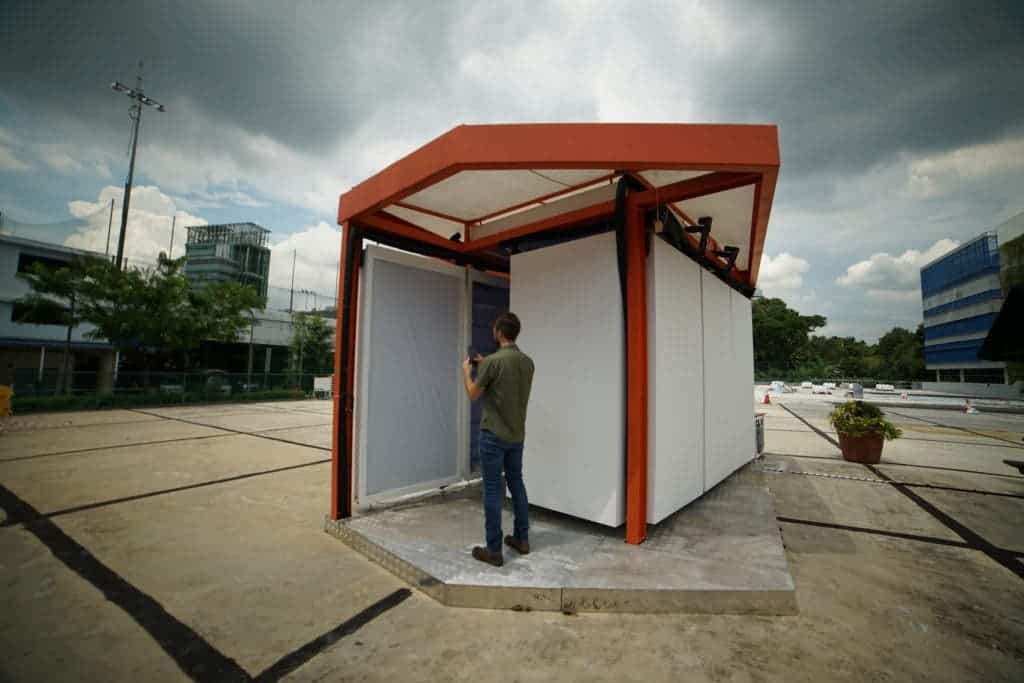With the world getting hotter, finding energy-efficient ways to cool down is more important than ever. A team of researchers from the University of British Columbia, Princeton University, the University of California, Berkeley and the Singapore-ETH Centre plan to help us do just that with the ‘Cool Tube’.

Image credits Lea Ruefenacht.
Air conditioning can be a blessing in the hot summer months, but they also consume a lot of power. Added up on a city- or country-wide scale this translates to a huge drain on our grids and vast quantities of CO2 emissions. Air conditioning can also contribute to respiratory complications by keeping germs in suspension in the air (by keeping it in constant motion).
The team behind Cold Tube wanted to change how we manage our personal temperature during such times, and their approach doesn’t involve cooling or moving air at all.
Cool cooling ideas
“Air conditioners work by cooling down and dehumidifying the air around us—an expensive and not particularly environmentally friendly proposition,” explains co-lead author Adam Rysanek, assistant professor of environmental systems at UBC’s school of architecture and landscape architecture.
“The Cold Tube works by absorbing the heat directly emitted by radiation from a person without having to cool the air passing over their skin. This achieves a significant amount of energy savings.”
The system consists of a series of rectangular panels that can be fitted to walls or ceilings. These elements are kept cool by chilled water being circulated through them.
The idea behind the Cold Tube is that heat naturally radiates from hot surfaces to colder ones — that’s how heat from the Sun makes it to Earth. When you sit under or near one of these elements, your body heat will radiate towards it. The team describes this effect as similar to the sensation of cold air flowing over your body, even when ambient temperatures are high.
It’s not a new concept — in fact, it’s been in use in industrial settings for several decades now. What Cold Tube does differently, however, is to use a special coating that does away with the need to dehumidify air.

Image credits Lea Ruefenacht.
Humidity in the air condenses on cold surfaces, which can cause hygiene issues and damage surfaces and materials. The team developed an airtight, water-repellent membrane that encases their panels, and prevents condensation from forming (but still allows the system to function as intended).
The researchers tested their system in an outdoor setting in Singapore last year. The temperature outside during the test was 30 degrees Celsius (86 degrees Fahrenheit) on average. Yet, participants reported feeling ‘cool’ and ‘comfortable’ despite the heat, and the panels remained dry throughout the day.
“Because the Cold Tube can make people feel cool without dehumidifying the air around them, we can look towards shaving off up to 50 percent of typical air conditioning energy consumption in applicable spaces,” said Eric Teitelbaum, a senior engineer who oversaw the demonstration project while working at the Singapore-ETH Centre.
“This design is ready. It can obviously be used in many outdoor spaces—think open-air summer fairs, concerts, bus stops, and public markets. But the mission is to adapt the design for indoor spaces that would typically use central air conditioning.”
The system doesn’t rely on cooling air, like a traditional air conditioner, so it can even be used with an open window, or in open spaces. The team hopes that its low operating cost will make the Cold Tube an attractive option for both developed and developing countries. A commercially viable version of the system is expected for 2022.
The paper “Membrane-assisted radiant cooling for expanding thermal comfort zones globally without air conditioning” has been published in the journal PNAS.






